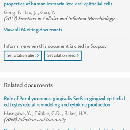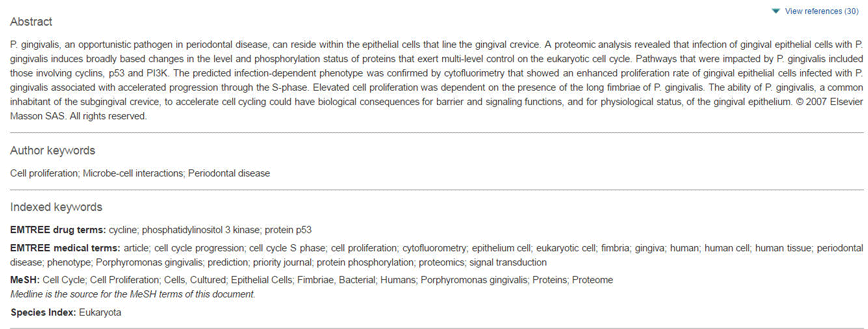
 |
|
|
Kuboniwa M, Hasegawa Y, Mao S, Shizukuishi S, Amano A, Lamont RJ, et al. P. gingivalis accelerates gingival epithelial cell progression through the cell cycle. Microbes Infect. 2008;10(2):122-8.
|
|
Scopus is particularly good for pearl growing, as its design makes it easy to search both forward (for citing articles) and backward (for references) from a single paper. It is also possible to search for papers by particular authors or in a given journal. It is worth noting that Scopus works well in combination with the ScienceDirect database.
A number of tools are provided for finding related papers:

- Author names - Clicking on a name finds all of the papers in the Scopus database known to be by that author.
- Cited by - The number in the Cited By column to the right of the paper shows the number of other records in Scopus that include a reference to the starting paper; clicking on it produces a list of these papers.
- Related documents shows related documents based on shared references.
- Click the number in the Cited by column to view the documents that reference this article.
Click the article title to reveal the complete record for the starting paper, including the abstract and the complete list of references; for each reference, the number of citing papers is shown, allowing the discovery of other papers that have similar reference lists to your starting paper.
| « PubMed | ScienceDirect » |







